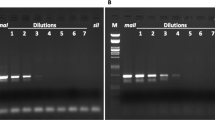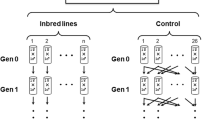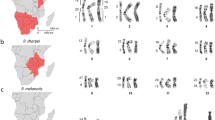Abstract
ALTHOUGH crossing-over does not normally occur in the male Drosophila, it has been shown1,2 that chemical induction of crossing-over in the male Drosophila is possible using chemical mutagenic agents, such as formaldehyde, dihydroxymethyl-peroxide, and mustard gas.
This is a preview of subscription content, access via your institution
Access options
Subscribe to this journal
Receive 51 print issues and online access
$199.00 per year
only $3.90 per issue
Buy this article
- Purchase on Springer Link
- Instant access to full article PDF
Prices may be subject to local taxes which are calculated during checkout
Similar content being viewed by others

References
Sobels, F. H., and van Steenis, H., Nature, 179, 29 (1957).
Sobels, F. H., Bootsma, D., and Tates, A. D., Dros. Inf. Service, 33, 161 (1959).
Pelecanos, M., and Alderson, T., Mutation Res., 1, 173 (1964).
Alderson, T., Nature, 179, 974 (1957).
Sang, J. H., J. Exp. Biol., 33 (1956).
Auerbach, C., Mutation, Part 1 (Oliver and Boyd, Edinburgh, 1962).
Author information
Authors and Affiliations
Rights and permissions
About this article
Cite this article
PELECANOS, M. Induction of Cross-overs, Autosomal Recessive Lethal Mutations, and Reciprocal Translocations in Drosophila after Treatment with Diethyl Sulphate. Nature 210, 1294–1295 (1966). https://doi.org/10.1038/2101294a0
Issue Date:
DOI: https://doi.org/10.1038/2101294a0
This article is cited by
Comments
By submitting a comment you agree to abide by our Terms and Community Guidelines. If you find something abusive or that does not comply with our terms or guidelines please flag it as inappropriate.


